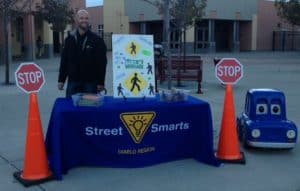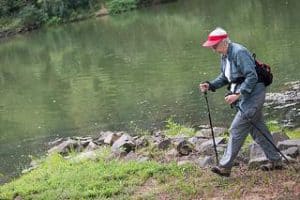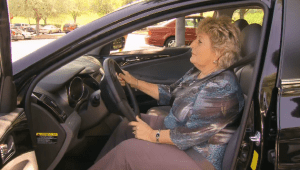 Walk to School Day began in the US in 1997 as a one-day event aimed at building awareness for the need for walkable communities. Now the event is part of a year-round movement for Safe Routes to School, with an annual celebration each October.
Walk to School Day began in the US in 1997 as a one-day event aimed at building awareness for the need for walkable communities. Now the event is part of a year-round movement for Safe Routes to School, with an annual celebration each October.
 This year, 11 Contra Costa County schools in 5 cities are teaming up with Street Smarts Diablo to celebrate Walk to School Day! School events in Concord, Pittsburg and Walnut Creek will happen on October 7, while Brentwood and Oakley schools will celebrate on October 21.
This year, 11 Contra Costa County schools in 5 cities are teaming up with Street Smarts Diablo to celebrate Walk to School Day! School events in Concord, Pittsburg and Walnut Creek will happen on October 7, while Brentwood and Oakley schools will celebrate on October 21.
Here are some great reasons to encourage students to walk to school:
- Walking builds physical fitness and instills healthy habits
- Walking reduces traffic
- Walking saves you money on gas
- Walking makes a difference in the environment
- Walking helps children connect with other students & their neighborhood
Whether it’s Bike to School Day or any other day, please remind children to walk safely:
- Use crosswalks
- Stop, look & listen before crossing, and
- Walk with a buddy!
 October 7
October 7
Pittsburg: Highlands Elementary
Walnut Creek: Indian Valley Elementary
Concord: Cambridge Elementary, Meadow Homes Elementary, Oak Grove Middle School, Westwood Elementary
 October 21
October 21
Brentwood: Marsh Creek Elementary, Pioneer Elementary
Oakley: Almond Grove Elementary, Gehringer Elementary, Laurel Elementary
For more information, visit the Walk to School Day website.

 3. STRENGTH & ENDURANCE – Regular exercise helps
3. STRENGTH & ENDURANCE – Regular exercise helps 



 511CC wins Safe Routes to School Mini Grant. The
511CC wins Safe Routes to School Mini Grant. The 